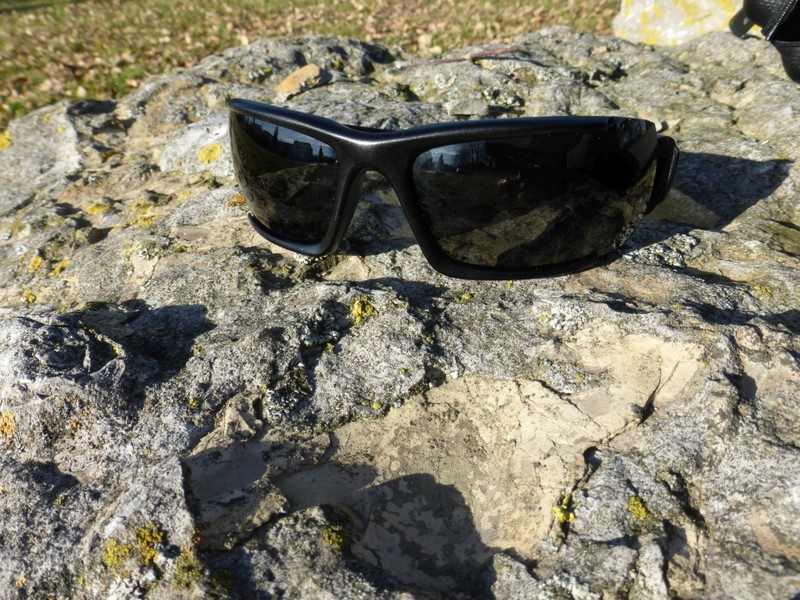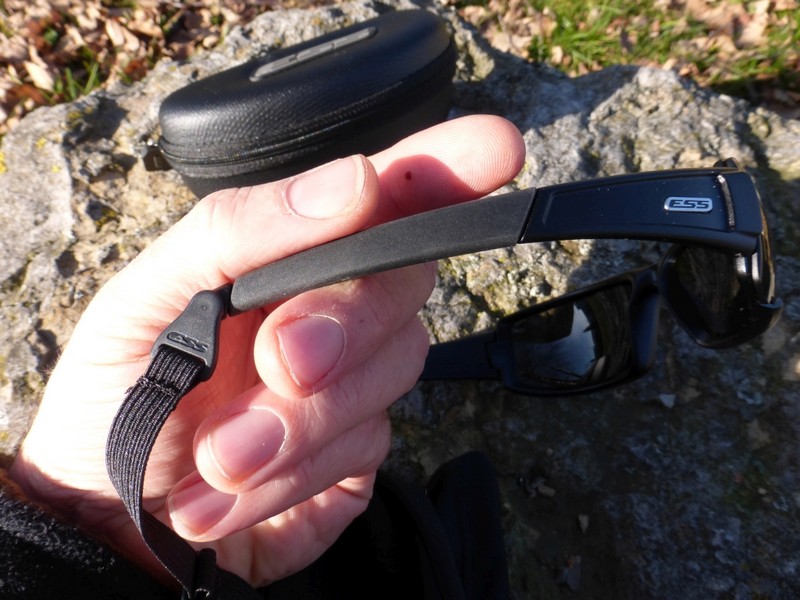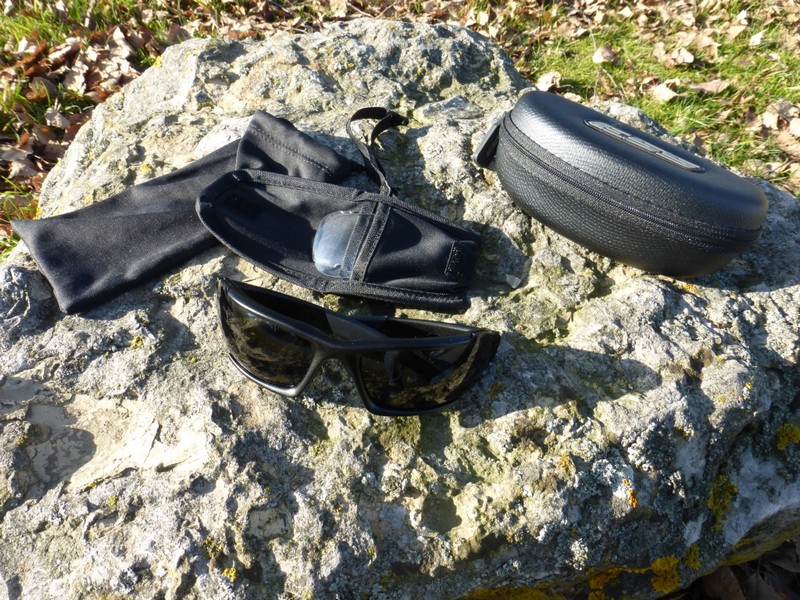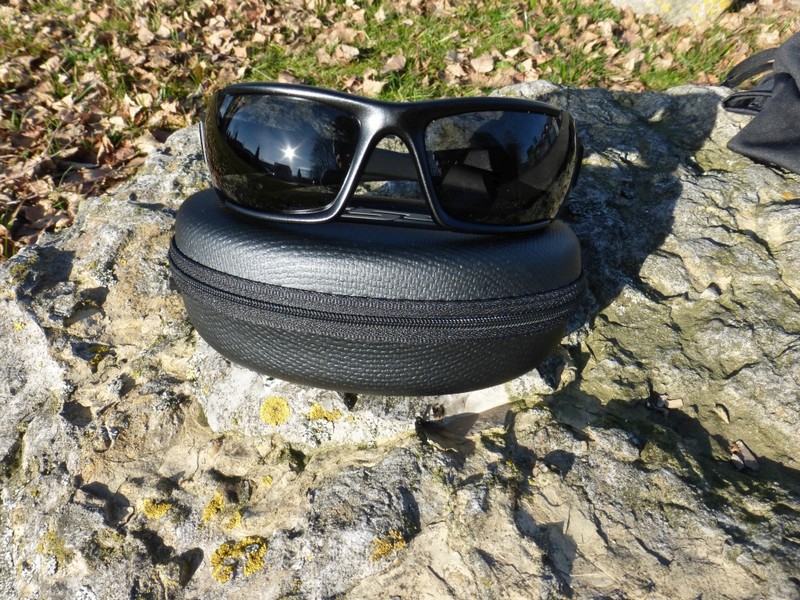Get the weekly SPARTANAT newsletter.
Your bonus: the free E-Book from SPARTANAT.

REVIEW: ESS CDI MAX
Oakley. Wiley X. Smith. Revision. Who's missing? ESS ( Eye Safety Systems ) of course. All these manufacturers produce sunglasses, among others and specifically for the tactical area. Who hasn't seen the typical glasses in pictures where soldiers wear them? They mostly look more or less the same and optically hardly differ from cycling glasses. They also come very plain - without glass surrounded by the frame. Oakley has had models in their range for some time that can also be worn well in civilian life, as the appearance is more reminiscent of a classic sunglasses than shooting glasses - e.g. the models Gascan or Fuel Cell, which are very popular. ESS has also gone down this path, but you don't have to dig so deep into your pocket and you get more accessories for your money. Today we present one of these models to you: the ESS CDI MAX.  The ESS CDI is a stylish sunglasses with easily interchangeable lenses and a classic sunglass frame. Since the CDI falls rather small in terms of frame size, there is also the model CDI MAX tested here. Here the frame is larger and the glass even thicker than the CDI - with 2.4mm Poycarbonate for the CDI MAX and 2.2mm for the CDI.
The ESS CDI is a stylish sunglasses with easily interchangeable lenses and a classic sunglass frame. Since the CDI falls rather small in terms of frame size, there is also the model CDI MAX tested here. Here the frame is larger and the glass even thicker than the CDI - with 2.4mm Poycarbonate for the CDI MAX and 2.2mm for the CDI.  With MIL SPEC MIL-PRF-31013 (Clause 3.5.11), ANSI Z87.1-2010 the glasses meet all the requirements demanded by the military.
With MIL SPEC MIL-PRF-31013 (Clause 3.5.11), ANSI Z87.1-2010 the glasses meet all the requirements demanded by the military.
Wikipedia Excerpt:
"Ballistic Eyewear"
Ballistic Eyewear is a form of glasses or goggles that protect from small projectiles and fragments. Ballistic eyewear is commercially available for anyone who wishes to buy it. For the U.S. Military, choices are listed on the Authorized Protective Eyewear List (APEL). The history of protective eyewear goes back to 1880 and extends through to World War I and the present. There are three standards that are currently used to test the effectiveness of ballistic eyewear. These include a U.S. civilian Standard (ANSI Z87.1 - 2010), a U.S. military Standard (MIL-PRF-31013), and a European Standard (EN166, 169, 170 & 172).
Another example of ballistic eyewear from the U.S. Army Approved Protective Eyewear List (APEL).
Although it is not required, it is recommended that all eyewear meet ANSI Z87.1, but for ballistic protective eyewear it is required that it meets Military Standards for Impact Protection. MIL_DTL-43511D clause 3.5.10 for Goggles and visors and MIL-PRF31013 clause 3.5.1.1 for spectacles. Though These Standards have been commonly used especially by NATO Forces, an update on MCEPS of January 2013 now references these clauses in MIL-PRF-32432. Ballistic sunglasses or prescription eyeglasses must meet the same requirements. In brief, the U.S. military Standard requires that Ballistic eyewear must be able to withstand up to a .15 caliber (at 640 ft/sec) for spectacles and .22 caliber at 550-560 ft/sec for goggles. The European Standard identifies four levels of impact protection.
Manufactures offer a variety of styles and colors to meet different Needs and preferences. Some make claims of superior side protection, comfort, anti-fog coatings, interchangeable lenses, transition lenses, etc. At least one product from more than a half dozen manufacturers are listed on the U.S. Army's Authorized Protective Eyewear List (APEL). Some Options, including the Wiley X PT-1 and Talon as well as Revision's Sawfly and the Desert Locust Google can be obtained in prescription lenses that meet the ballistic protection standards.
In addition to impact requirements, the U.S. Army requires for its soldiers that ballistic eyewear be functional, reasonably comfortable, not faddish (i.e., no bright colors or distracting designs) and able to be disinfected. "
Of course, the CDI MAX also offers 100% UV protection.
The frame surrounds the lenses to 3/4 and only leaves enough space on the outer sides to remove the glass. This is far more pleasant than, for example, with the Fuel Cell from Oakley and if you don't rush, you can even remove the glass completely without touching it. In principle, you just have to pull the two protruding spikes of the glass and pull it out of the frame. The temples must be folded in. These are practically an additional safeguard when wearing the glasses: it is impossible for the glass to fall out.
The temples are slightly elastic and rubberized at the ends, and very flat. At the very end there is a small hole on each side where an elastic headband can be attached. 
Compared to an Oakley Fuel Cell, which only comes with a microfiber bag, the ESS CDI MAX includes the full range of accessories in the scope of delivery: In addition to the glasses, you get a hard case, a microfiber bag, the headband and a small microfiber pouch with clear lenses.
 The wearing comfort of the CDI MAX is exceptionally good - here we have to say fairly that every head is different and the wearing feeling is subjective from person to person. For us, it is more comfortable to wear than, for example, the Oakley Fuel Cell or Gascan, as these with the thicker temples quickly press on the ears. The lenses are pleasantly darkened, just right for sunlight in our latitudes, but not so dark that you would have to take them off, for example, when driving through a tunnel.
The wearing comfort of the CDI MAX is exceptionally good - here we have to say fairly that every head is different and the wearing feeling is subjective from person to person. For us, it is more comfortable to wear than, for example, the Oakley Fuel Cell or Gascan, as these with the thicker temples quickly press on the ears. The lenses are pleasantly darkened, just right for sunlight in our latitudes, but not so dark that you would have to take them off, for example, when driving through a tunnel.
Due to the close-cut design, the CDI MAX fogs up quite quickly, but we also had this with models from Oakley and Wiley X - again this varies from person to person.
With the lenses, you have a choice of five different colors + the included clear lens: There is Smoke Grey (introduced here), Silver mirrored, Copper, Bronze, and Yellow. On the ESS page there is a PDF for download , which exactly explains for which lighting conditions which lens is best. Replacement lenses are priced at 35 euros. 
CONCLUSION: ESS offers a good package with the CDI MAX: You get a robust protective glasses with extensive accessories for a justified price, which doesn't have to hide fashion-wise behind ordinary sunglasses. A clear recommendation from us.
The CDI MAX is available in black or tan for 105 euros at the Marines Shop . Other models from ESS including dust protection glasses (like the one introduced here ESS INFLUX ) and accessories are also available there.
ESS on the Internet: www.esseyepro.com
MARINES SHOP on the internet: www.marines-shop.com
& nbsp;
& nbsp;
& nbsp;
& nbsp;
SPARTANAT is the online magazine for Military News, Tactical Life, Gear & Reviews.
Send us your news: [email protected]
Ad
similar
Get the weekly SPARTANAT newsletter.
Your bonus: the free E-Book from SPARTANAT.


